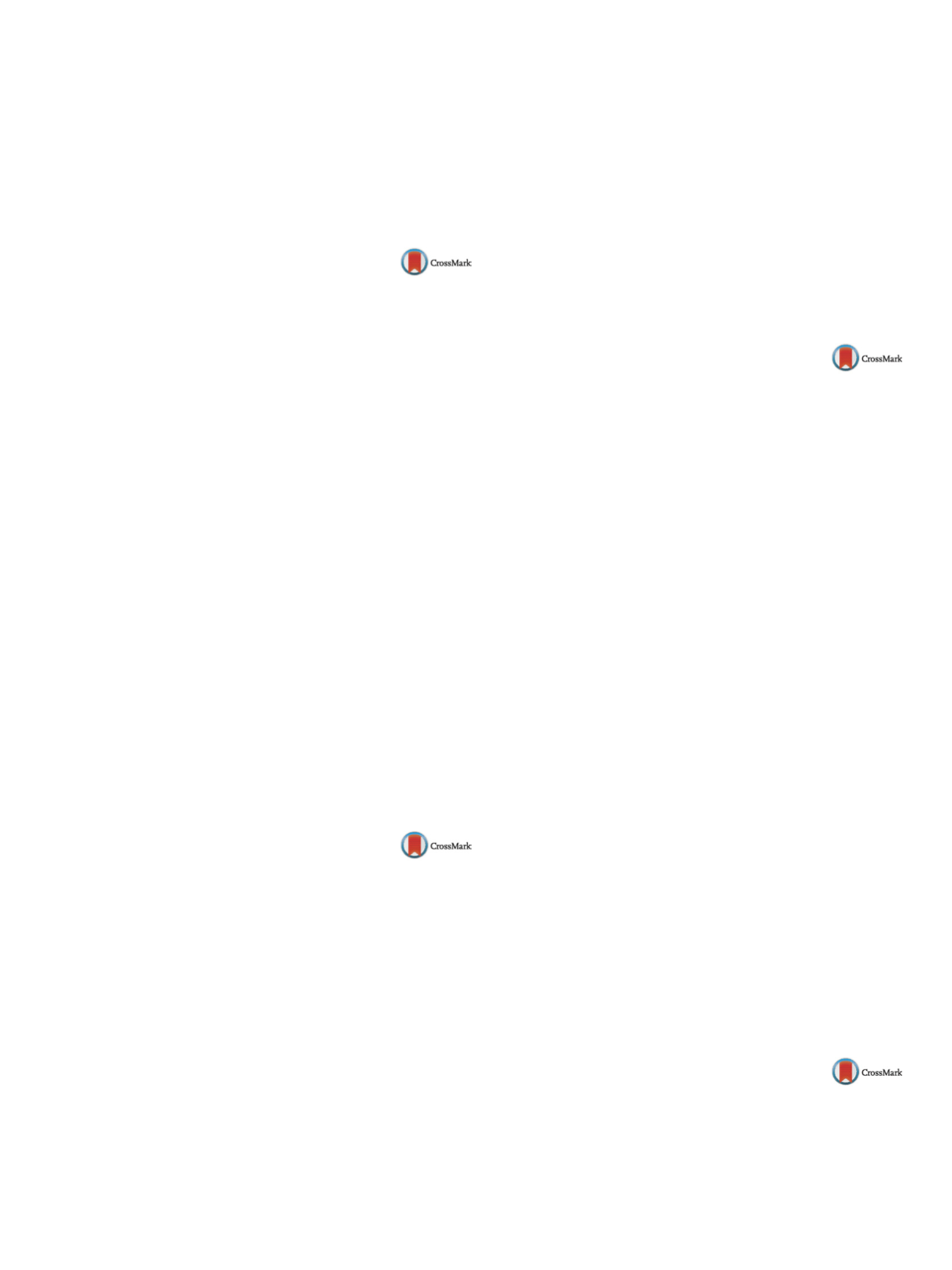

25th European Congress of Psychiatry / European Psychiatry 41S (2017) S583–S644
S631
Disclosure of interest
The authors have not supplied their decla-
ration of competing interest.
Reference
[1] Riba J, et al. Telling true from false: cannabis users show
increased susceptibility to false memories. Mol Psychiatry
2015;20(6):772–7.
http://dx.doi.org/10.1016/j.eurpsy.2017.01.1027EV0698
Cannabidiol’s role as a potential target
in the treatment for schizophrenia
A. Carvalho
∗
, J. Felgueiras , T. Abreu , C. Freitas , J. Silva
Centro Hospitalar Tâmega e Sousa, Psychiatry and Mental Health
Department, Porto, Portugal
∗
Corresponding author.
Objectives
Schizophrenia is a debilitating psychiatric disorder
which places a significant emotional and economic strain on the
individual and society-at-large. Unfortunately, currently available
therapeutic strategies do not provide adequate relief and some
patients are treatment-resistant. Therefore there is urgent need for
the development of mechanistically different and less side effect
prone antipsychotic compounds. Recently, the endocannabinoid
system has emerged as a potential therapeutic target for pharma-
cotherapy that is involved in a wide range of disorders, including
schizophrenia. Modulation of this systemby themain psychoactive
component in cannabis,
9tetrahydrocannabinol (THC), induces
acute psychotic effects and cognitive impairment. However, the
non-psychotropic, plant-derived cannabinoid agent cannabidiol
shows great promise for the treatment of psychosis, and is asso-
ciated with fewer extrapyramidal side effects than conventional
antipsychotic drugs.
Methods
The aim of this review is to analyse the involvement
of the endocannabinoid system in schizophrenia and the potential
role of cannabidiol in its treatment.
Results and conclusions
There is still considerable uncertainty
about the mechanism of action of cannabidiol as well as the brain
regions which are thought to mediate its putative antipsychotic
effect. Further data is warrant before this novel therapy can be
introduced into clinical practice.
Disclosure of interest
The authors have not supplied their decla-
ration of competing interest
http://dx.doi.org/10.1016/j.eurpsy.2017.01.1028EV0699
Psychotic symptoms in patients with
nmda antibodies
J. Cruz Fourcade
1 ,∗
, M. Garcia Poggio
2, R. Martín Aragón
2,
A. Mu˜noz Domenjó
2, R. Molina Cambra
21
Associate Physician, Psychiatry, Madrid, Spain
2
Resident, Psychiatry, Madrid, Spain
∗
Corresponding author.
Introduction
This paper is a reviewof literature about the relation
in some cases between psychotic symptoms and NMDA antibodies.
Most of these cases are early observed and treated by psychiatry,
observing torpid evolution and symptoms that are rarely observed
in Psychiatry patients, like visual hallucinations or rapid fluctua-
tions of symptoms.
Objectives
Make a review of psychotic symptoms and NMDA
antibodies, to think about other options when we are in front of
some unusual cases in psychiatry, and it seems that “nothing is
working”
Methods
Systematic review of pub med literature, applying the
keywords: “psychotic” and “NMDA antibodies” of last 5 years.
Results
We found that in most of cases the patients presents
Opisthotonus, catatonia, and rhythmic and non-rhythmic involun-
tary movements of the mouth and jaw, and most of them had a
psychiatric evaluation for those symptoms. There was no response
to antipsicotic treatment. The treatment with corticoids and ritux-
imab was effective.
Conclusions
In psychiatry we have to think in some cases that
maybe “the patient could have something else than a psychiatric
disease”, most when we found that the symptoms has a rare pre-
sentation and the treatment is not effective.
We encourage our colleagues to “think outside the box” when
something like this occurs, and hesitate about our own valuations
of the patients, when the case is atypical strange.
Disclosure of interest
The authors have not supplied their decla-
ration of competing interest.
http://dx.doi.org/10.1016/j.eurpsy.2017.01.1029EV0700
Charles-bonnet syndrome:
Hallucinations are in the eye of the
beholder
N. De Uribe-viloria
∗
, E. Mayor Toranzo , S. Cepedello Perez ,
I. Sevillano Benito , M. De Lorenzo Calzon , M. Gomez Garcia ,
G. Medina Ojeda , F. De Uribe Ladron De Cegama
Hospital Clinico Universitario De Valladolid, Psychiatry, Valladolid,
Spain
∗
Corresponding author.
Introduction
Charles-Bonnet Syndrome (CBS) is a clinical entity
characterized for visual hallucinations in patients with severe
vision impairment and preserved cognitive state. Its pathogeny is
still unknown, limiting management options. For diagnosis neu-
rological and psychiatric disorders must be discarded. Treatment
is based in three pillars: explaining to the patient the origin and
nature of the symptoms, treating the visual deficit when possible,
and pharmacotherapy with anti-psychotics.
Objectives and aims
To outline the main characteristics and
etiopathogenic theories of the CBS, so as to improve diagnosis and
treatment.
Methods
Basing on a case followed in mental health consults,
we made a systematic review of the articles published in Med-
line (PubMed) in the last 5 years, with the following keywords,
Charles-Bonnet Syndrome, hallucinations, deafferentation, visual
impairment.
Results
We found that all our case and the reported ones had
in common the nature and characteristics of the hallucinations, the
presence of a trigger, usually a newmedicament, and the functional
MRI patrons of activity; those patrons located the loss of input
prior to the association cortex, which appeared hyper-excitable in
functional MRI.
Conclusions
Although the aetiology and pathogeny of CBS is still
unclear, present data suggests that the key mechanism may be a
dysregulation in the homeostatic adaptation of the neural pathway
when it is left without external input, traducing a hyper-function
of a physiological process, probably mediated by acetylcholine, as
opposedwith other neuropsychiatric pathologies, inwhich the cor-
tex is the primary affected area.
Disclosure of interest
The authors have not supplied their decla-
ration of competing interest.
http://dx.doi.org/10.1016/j.eurpsy.2017.01.1030EV0701
Is borderline personality disorder
a neuroendocrine disease?
C. Ferreira
∗
, S. Alves , C. Oliveira , M.J. Avelino
Centro Hospitalar Psiquiátrico de Lisboa, SETA, Lisbon, Portugal
∗
Corresponding author.
Introduction
Borderline personality disorder (BPD) is a disabling
heterogeneous psychiatric disorder characterized by poor affect


















